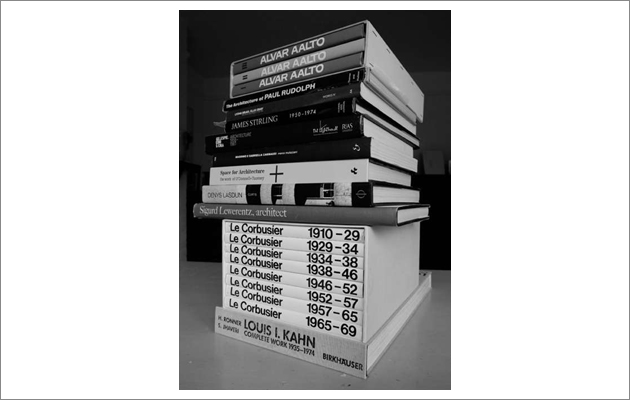|
|
||
|
Even the worst architectural monographs gain interest over time, even if the speakers at a London Festival of Architecture panel on such publications were undecided as to their immediate merits. John Jervis provides necessary reassurance A packed house assembled for last week’s panel on monographs at Waterstone’s Piccadilly to witness an occasionally combative discussion on the “open” monograph (practicing architects rather than dead ones). The range of opinions was wide – Simon Henley of Henley Halebrown Rorrison Architects (currently working on his own offering in the genre) highlighted the monograph’s importance as a repository for unbuilt projects and as part of his working processes, while Ros Diamond of Diamond Architects was keen to emphasise their often unrealised potential to locate connections between critical thought and built work. There was, however, general agreement that the dirty realities of architectural practice were all too often glossed over, buildings invariably being presented in a moment of “completion”, unoccupied and unproved. This was one example of the control over production that allows architects to retrospectively make sense of their careers and define (or defend) individual projects, and it was telling that the discussion ended with a staunch defence of the print monograph against digital intruders. The printed book was depicted as an enticing object that allows for the considered presentation of a life’s work. Its content can be absorbed in a slow, purposeful manner not possible on the internet, with intellectual intent and architectural achievement carefully curated by the publisher. These mentions of the haptic qualities of the printed book seemed a little disingenuous – the phrase “coffee table book” lingered unspoken, despite being the most familiar role of the monograph. It was revealed that hitting a sales target of 1,000 was a strong result, but there was no acknowledgement of the fact that most of even this disappointing total will go unread, gathering dust in living rooms and studies as a private or public testament to innate seriousness and catholic interests. This neglect, however, is a blessing in disguise – the text in “open” monographs is usually terrible. As The Independent’s Jay Merrick bemoaned, “How many times have we actually remembered their contents?” Essays are included at the start to provide academic heft, followed by an encyclopaedic compilation of projects – this formula may serve a useful cataloging purpose, but rarely amounts to a good book. My experience publishing living artists would confirm this – the subject’s absolute control results in a bland introductory overview penned by a curator or academic selected for their unthreatening manner, usually followed by a couple of essays on aspects of practice pleasing to the subject and, if you are lucky, a short statement from the horse’s mouth. By the stage of their career at which a monograph is feasible, many creatives have lost their senses of perspective and humour. Each commonplace is heralded as further proof of lingering genius by those whose livelihoods depend on their patronage, whether employees, academics, gallerists or even publishers – thus depriving the architect of any real sounding board, filtering system or collaborative exchange. A monograph is rarely an arena in which late-flowering vulnerability is revealed. One aspect in which monographs do perform well, however, is imagery. With unfettered access to archives, strong relationships with photographers and clients, and partial control of copyright, monographs can include imagery of a richness beyond the dreams of independent publishers. That the perfect architectural photograph is generally prioritised over a messy exploration of process can be a disappointment – again, a glossy career testament is the preferred result. Even the worst of architectural monographs do gain interest over the decades – to order up a random 1970s example at the British Library is to be confronted by 20 or so dirty, thumbed pages at the start, followed by pristine pages detailing decades of cherished projects. Those introductory essays and statements do indeed provide valuable information on the state of mind of the architect in question, and that of their paid writers, but not perhaps in the way intended. With the passage of years, posterity comes to its own conclusions as to the merits of their work, and those texts now satisfy historical, or even zoological curiosity as to how the chosen specimen saw or wished to present themselves at a precise moment, and allow a wider insight into the state of architectural through and practice at the time. Merrick ended proceedings with a plea that architects use monographs to make a firm statement of their own position, both about architecture and about their thoughts on the wider world, citing Peter Zumthor’s Atmospheres as an exemplary publication. It is hard to disagree – such publications may risk contemporary ridicule, but they will also provide material of real value for future researchers on the influences behind an architect’s practice, and may even inspire and inform current practitioners – both things that architectural monographs rarely achieve at present. Despite these failings, I, like so many others, am foolish enough to own countless of them. Why a Monograph took place on 4 June as part of the London Festival of Architecture |
Words John Jervis |
|
|
||


















